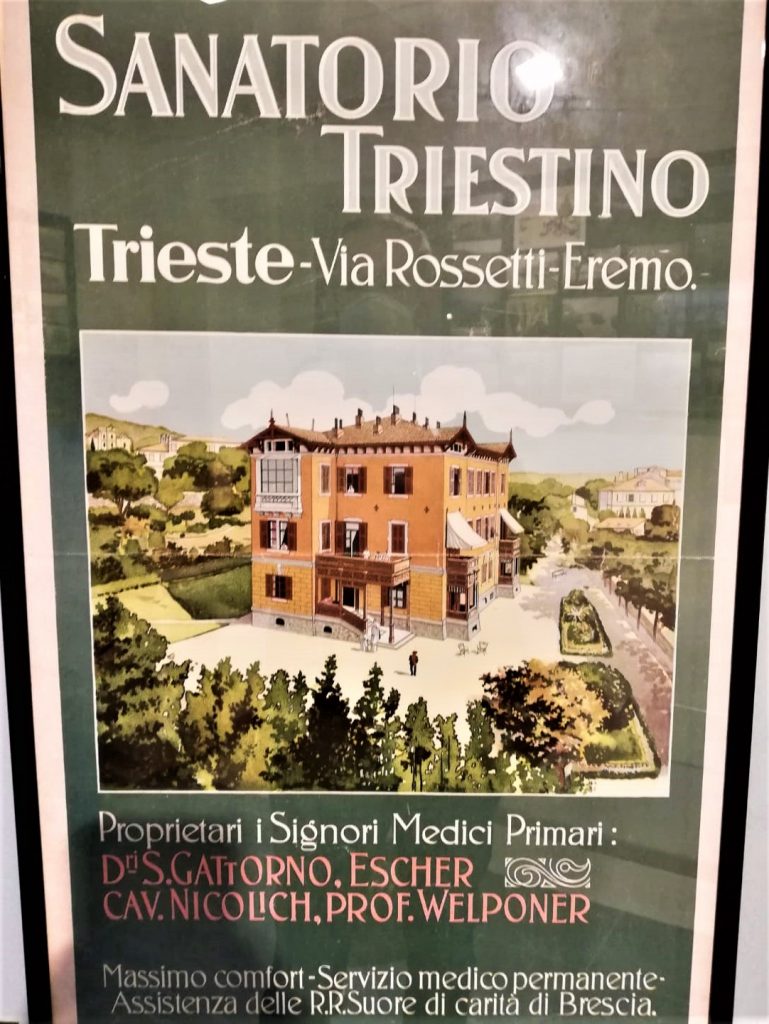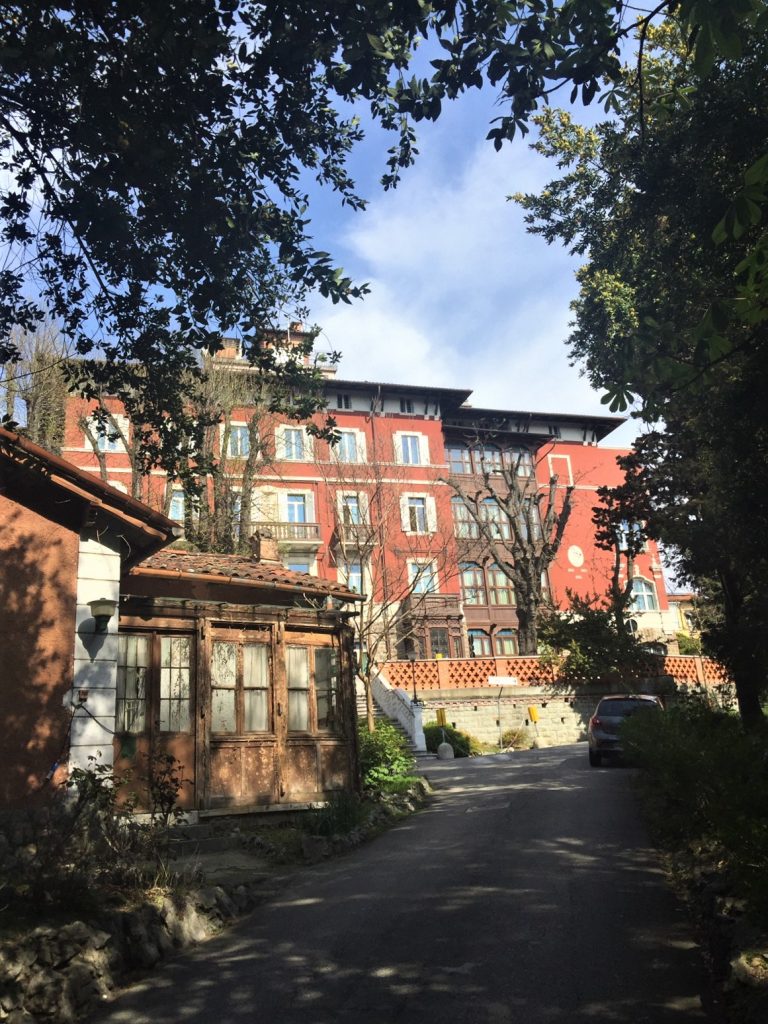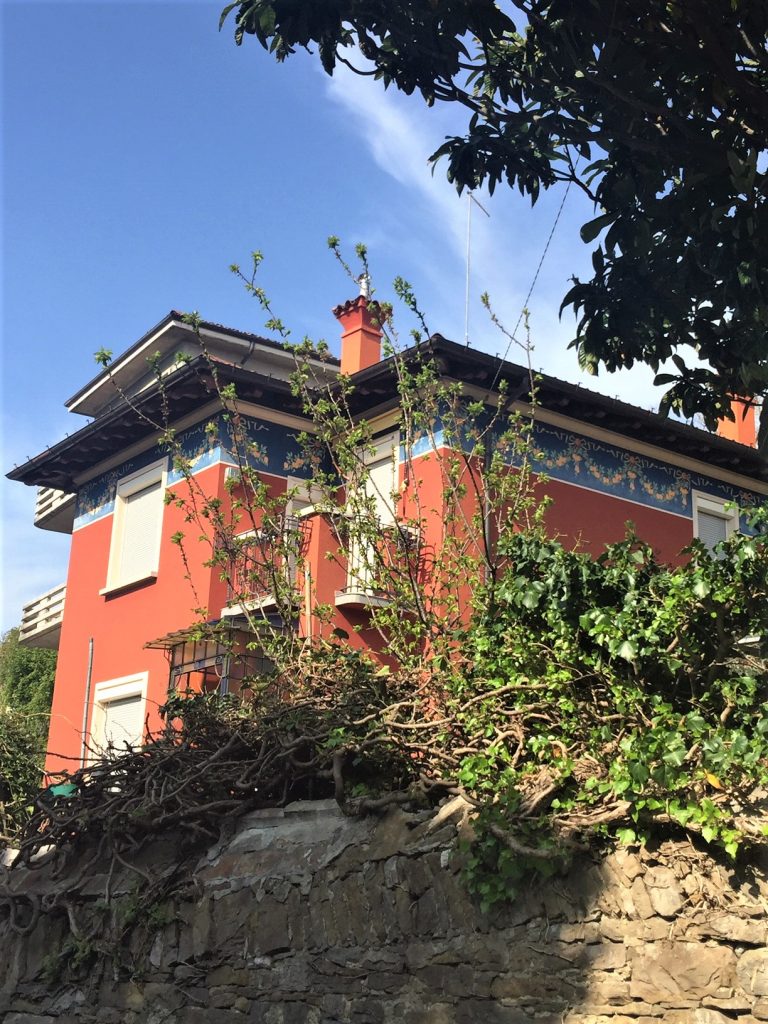by Alessandra Ressa
Among the many beautiful buildings along via Rossetti, each with its unique style and history, Sanatorio Triestino, the second oldest private hospital in Italy, is a must see.
At the corner of via Rossetti with the exclusive via Redi, it has been a solid healthcare institution in Trieste for over 120 years. Built in 1897 on the grounds of a stunning villa surrounded by a park, which belonged to chemist Ferdinando Zanetti (whose pharmacy was in via Commerciale 26), the clinic is also the second oldest in Trieste. It was founded by two Trieste heading lights in medicine, Dr. Teodoro Escher and Professor Luigi Welponer, both chiefs of surgery at Trieste’s first and only healthcare facility at that time, Ospedale Maggiore.

Although a private enterprise from the very beginning, the hospital claimed to have been initially meant as a maternity ward for the poor. However, it soon became a well-known healthcare facility specializing in surgery and maternity. Its modern facilities and internationally trained doctors attracted wealthy patients from all over the Empire. Trieste’s lower and middle classes too were willing to spend their limited finances to get the best healthcare possible for the time.

Following World War I, as Trieste’s population continued to swell, there was an inevitable increase in demand for medical care and Sanatorio decided to expand, opening up to more specializations and adding new wards. Famous Trieste architect Polli worked on the hospital’s new look, adding special woodworks on its facades.

Many generations of Triestini were born at Sanatorio before specialized hospital Burlo Garofolo came along. Today, it still remains a private clinic with an excellent reputation, but, after joining the Regional public healthcare services in 1981, it can be accessed when you book visits, medical treatments or surgeries through the Italian public health system.

While the Covid-19 epidemic endures, it is not possible nor advisable to access medical facilities without reasons related to your health. However, I strongly recommend a stroll in the park (the main access to the hospital at the corner with via Redi is always open to the public during the daytime) to enjoy the building’s vintage architecture and the park’s retro atmosphere. Even the signs have remained the same for almost one hundred years.
Interestingly and a little sadly, what must have been the custodian’s house, to the left at the very entrance of the facility, has been completely abandoned and stands today in sharp contrast to the carefully well-kept main building.

At the end of your visit, take a little stroll up little cul de sac via Redi and its parallel street, via Girardi, on the other side of Sanatorio. There, you will see many interesting villas, each showing off elaborate and quite different architectural styles according to the eras and fashions.
They range from 1830s to 1930s, some worthy of their glorious past stand partially hidden behind thick gates, others gape in decadent embarrassment, their chipped paint and cheap aluminum windows telling of financial falls, family feuds, speculation, economic restraints, or simply bad taste.

While via Rossetti’s glorious past can still partially be admired on the surface, a more intriguing, mysterious, uneasy past is hidden from view. It runs silent and dark under the villas and apartment buildings. Find out about this and much more in the next article “Glorious and Curious Past of via Rossetti, Part 4.”






























Via dei Girardi è una via privata. Vi prego di NON mandarci turisti.